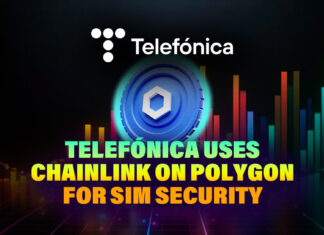In the crypto and blockchain landscape, the GameFi realm is blurring the boundaries between gaming and decentralized finance. Leading to the emergence of an immersive and lucrative new sector.
GameFi, a term coined to stand for the intersection of video games and DeFi, has gained significant traction in recent years. As we head further into 2023 and the current decade, this powerful new sector is poised for remarkable growth and innovation.
In this article, we’ll discuss the current state of the GameFi market and investigate those key developments that are shaping its future.
The Rise of GameFi
We can, of course, trace the emergence of GameFi to the soaring popularity of blockchain technology and cryptocurrency. The advent of blockchain functionality enabled game developers to introduce a new element to games which not only increased their engagement but also allowed players to earn assets and rewards with real-world value.
Moreover, the integration of cryptocurrencies into existing gaming sectors like iGaming meant that players could access a whole host of new experiences, such as playing at an online casino with crypto withdrawal features.
The Rise of Embedded Economies in Web3 gaming
These built-in markets fit right into the game experience & offer a new way to buy, sell, and trade in-game items
🧵#PlayToEarnGames #W3PLAY #Crypto #blockchain #nfts #Bitcoin #Solana #NFTCommunity #P2E #cryptonews #cryptocurrency pic.twitter.com/qJD2urOfK2
— Play To Earn Games (@Play_toEarn) April 30, 2023
Several factors have contributed to the acceleration of GameFi as a legitimate blockchain and crypto industry segment, including:
-
The P2E Model
Play-to-earn games are a dominant force in the GameFi sector and have turned traditional gaming business models on their heads. In the established pay-to-play sectors, gamers invest financial resources into a game without receiving any tangible rewards. Under the P2E model, however, they are rewarded for their time and effort with in-game assets like NFTs and crypto coins.
-
Decentralized Finance
GameFi dwarfs heavily the principles of the DeFi market, and by integrating its protocols, the sector creates a new ecosystem that enhances the financial aspect of gaming. For instance, some GameFi players enable users to generate a passive income through activities like liquid mining, crypto staking, and yield farming.
Recovering from the Fall
As it was for the entire crypto and blockchain industry, 2022 was rather catastrophic for the GameFi sector. Despite hitting all-time highs in terms of the amount of investment gained and the global uptake in crypto gaming, the bear market brought it all crashing down towards the end of the year. Instability was also rife throughout the wider crypto environment, with the collapse of FTX and Terra causing trouble for existing GameFi players.
6 Stats about the #GameFi Industry from 2022
1. The total market cap of all #GameFi tokens reached its peak of $25B on April 1st.
This was $11B shy of the industry’s ATH of $36B in Nov 2021.
Reference: https://t.co/YBSrPWxR3o(Token only, excluding gaming NFT)
— Ginoa.io (@ginoa_io) January 29, 2023
Despite the troubles, however, several well-known gaming situations continued to pour heavy investment into GameFi developments, while new blockchain gaming projects went ahead and launched anyway as 2023 came along with some, such as Calvaria’s Duels of Eternity, even exceeding pre-sale expectations. There’s still a consensus among industry plants that GameFi will be one of the primary vehicles to drive mainstream crypto adoption forward.
Big-Name Releases
Speaking of well-known gaming studios, it’s becoming increasingly clear that established gaming brands will play a substantial role in the continued development and expansion of the GameFi sector. According to Crypto Slate’s annual GameFi report, a total of $5.4 billion was raised in 2022, a sizeable percentage of which was funneled into projects from Sony, Ubisoft, and Nintendo.
Epic Games secured $2 billion in investment led by Sony last April to build out its metaverse concept, in which blockchain gaming will feature substantially. While the exact details of this project are still under wraps, Epic’s metaverse will launch a partnership between the studio behind Fortnite and the iconic toy brand LEGO.
#Epic Games, the developer behind #Fortnite, and #Lego, the famous toy brick construction company, have inked a partnership to produce a joint #metaverse. https://t.co/LzvVMYoLIK
— Bitcoin News (@BTCTN) April 12, 2022
That’s not to say, however, that the influence of blockchain software companies won’t also play a crucial role in taking GameFi to the next level. Animoca Brands, a Hong Kong-based VC firm and software development organization, is currently the most influential institution in the GameFi sector. The tech behind numerous hit Web3 and P2E gaming experiences, including The Sandbox, Phantom Galaxies, and Arc8, closed 61 rounds of funding in 2022, securing a total of $434 million.
Polygon Rides the Wave
Polygon, the layer 2 sidechain designed to scale up Ethereum, had a breakout year in 2022. Although the network went live in 2019, while its native token (MATIC) hit the market in 2017, it took some time for the network’s full potential to be realized. Last year, it displayed span performance across the DeFi and NFT sectors and had a significant impact on the GameFi market.
Games built on the chain are now soaring in popularity. Benji Bananas, for instance, pulls in 25,000 users on average a month. With approximately 70,000 global gamers per month play Planet IX. In total, Polygon users were up by 381% last year. Making it one of the top 5 chains at the start of 2022.
Tapping the power of Polygon zkEVM’s unlimited blockchain scaling 🌌
Introducing ✨OuterLife✨a new web3 gaming incubator and accelerator by gaming ecosystem, @GameSwift_io, and global gaming giant, @Play_Way.#onPolygon
More:https://t.co/eBjCTN9GOI— Polygon (Labs) (@0xPolygonLabs) July 19, 2023
With Polygon now riding the momentum of a stellar year. it has increased its number of GameFi protocols from 153 to 306. What’s more, the network recently joined forces with Immutable X to build a dedicated scalable gaming blockchain. Expected to launch before 2023 is out. the project is expected to revolutionize blockchain gaming. This is possible with fast loading speeds and seamless gameplay, among other features.
⬆️ For more cryptocurrency news, check out the Altcoin Buzz YouTube channel.
⬆️ Our popular Altcoin Buzz Access group generates tons of alpha for our subscribers. And for a limited time, it’s Free. Click the link and join the conversation today.




























